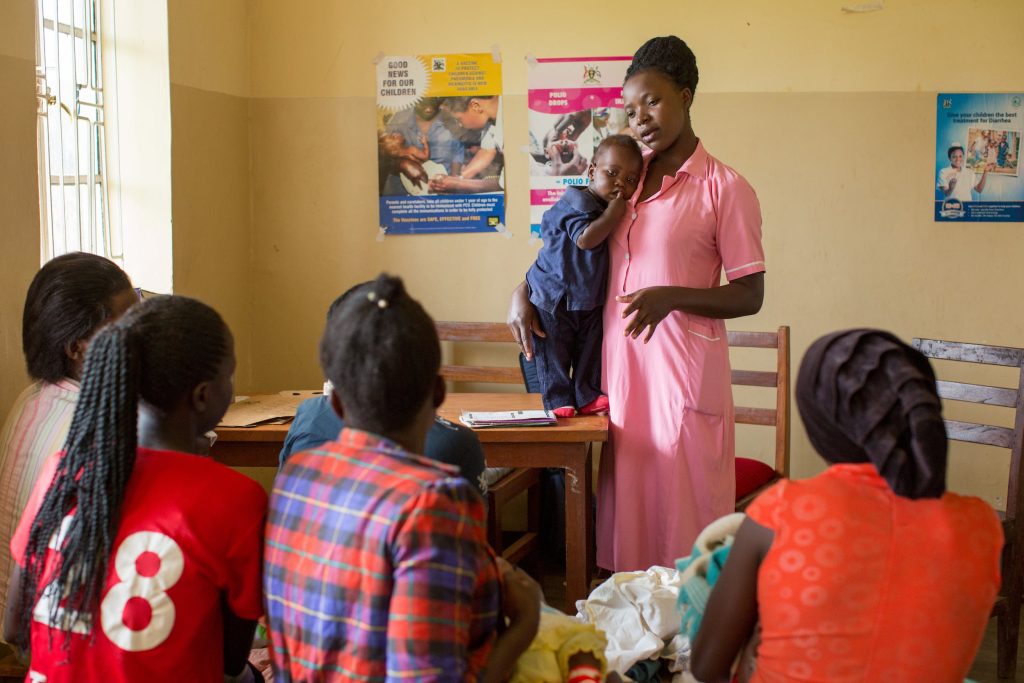The World Health Organization just declared “vaccine hesitancy” — the reluctance or refusal to vaccinate — as one of the planet’s top 10 global health threats in 2019.
While more children worldwide are receiving immunizations today than they were 20 years ago, health officials across the globe are grappling with outbreaks in countries with weak health systems, as well as in countries like the United States and Australia that had nearly eliminated vaccine-preventable diseases like measles.
Last week’s announcement from WHO comes as public health officials in New York are grappling with the state’s worst measles outbreak in decades. According to the CDC, the percentage of American children who have received no vaccinations has quadrupled since 2001. And in the European Union, measles cases now stand at a 20-year high, according to an analysis of WHO data published by The Guardian last month. As these outbreaks show, this health threat is not confined to impoverished areas or conflict zones.
Why It Matters
Vaccination prevents as many as 3 million deaths around the world each year. WHO has called vaccines the single most cost-effective health prevention in history — especially for children. Since 1990, vaccines have contributed to a 58% decrease in the deaths of children under five.
Expanding access to vaccines will be crucial for achieving the Sustainable Development Goals (SDGs). Preventing the suffering and spread of deadly diseases not only saves lives, it also supports the health and well-being of entire communities. The return on this investment is enormous. Every $1 spent on childhood vaccines yields $44 in benefits, according to the Bill & Melinda Gates Foundation. Immunized children grow up to be healthier, more productive adults, leading to stronger economies. Vaccines that protect against HPV, which causes cervical cancer, improve women’s health. Immunization addresses childhood malnutrition by preventing deadly diseases from robbing the body of vital nutrients. Vaccines can also serve as a frontline defense against antimicrobial resistance, another top threat identified by WHO.
Thanks in part to global coalitions like the Measles & Rubella Initiative, a partnership led by the American Red Cross, the UN Foundation, the U.S. Centers for Disease Control and Prevention, UNICEF, and WHO, measles deaths dropped by 80% between 2000 and 2017. Polio, meanwhile, has nearly been eradicated.
But it’s not just the anti-vaccination movement that threatens to undo our global progress. Two key challenges are availability and access. Globally, 1 in 5 children lack basic access to vaccines that protect against preventable diseases like measles, polio, pneumonia, and rotavirus. This is especially true in fragile countries or nations with weak health systems.
At the same time, aid agencies like UNICEF are facing vaccine shortages to fight rotavirus — the leading cause of severe childhood diarrhea worldwide — as a result of pharmaceutical companies prioritizing shareholder interests over humanitarian need. And because vaccines can take years to manufacture, it can be difficult for companies to meet sudden demand quickly.
What You Can Do
The spread of deadly disease is the kind of “problem without a passport” that requires a global response. This means continuing to invest in effective organizations like Gavi, the Vaccine Alliance, UNICEF, and WHO.
That’s why partnerships with the private sector are crucial. Since 2013, the Get a Shot, Give a Shot partnership with Walgreens and the UN Foundation’s Shot@Life campaign has provided 34 million vaccines for children in hard-to-reach places across the globe, including the Central African Republic, the Democratic Republic of the Congo and Sudan.
We also need local action. With more than 2,000 advocates across the country, the Shot@Life campaign mobilizes grassroots support to safeguard the planet’s most vulnerable children from deadly diseases like polio, measles, pneumonia, and rotavirus. Last year, Shot@Life advocates helped protect more than $580 million in U.S. funding for childhood immunization across the globe. They also raised more than $3 million to support UNICEF and WHO’s lifesaving vaccinations programs.
Adequate funding means scientists can continue pioneering new ways to prevent and treat the planet’s deadliest diseases. Right now the first vaccine to protect children against malaria is being piloted in three African countries. Just yesterday, WHO announced that it has obtained adequate supplies of an experimental Ebola vaccine to control the ongoing outbreak in the Democratic Republic of the Congo.
Meanwhile, when it comes to debunking dangerous “anti-vaxx” myths, WHO has identified community health workers as one of the most trusted and credible sources of information. Melody Anne Butler, a registered nurse and Infection Preventionist at the Good Samaritan Hospital in West Islip, New York, is one of these health workers. She has seen firsthand how contagious diseases like measles can infect people of all ages, from weeks-old infants to otherwise healthy high schoolers. “And these outbreaks move quickly. If your child is exposed to someone who is infected, they will likely catch it.”
As the Executive Director of Nurses Who Vaccinate, Butler says she has seen the power of vaccines at work — and the tragic consequences for those who lack access to modern medicine. “I see patients suffer every day, and I strongly believe that no patient should suffer from a disease that is preventable.”

